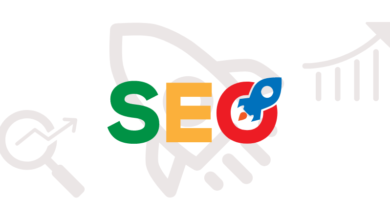Detecting document fraud is crucial for emerging markets. The global identity verification market is projected to reach $1.8 billion by 2028, with a compound annual growth rate (CAGR) of 14.9%. The intelligent document processing market is expected to grow to USD 5.2 billion by 2027, with a CAGR of 37.5%.
Therefore, healthcare institutions are obliged to comply with certain KYP regulations to obtain security for these increasing threats. Thus, document verification is augmented with diverse benefits that mitigate the risks and deter identity fraud.
This article will discover how document verification can ensure streamlined security and protect user data along with the integrity of the hospitals.
Key Insights of the Article
- The comprehensive online document verification
- The stringent process of document authentication
- Comparison of traditional v/s digital document checking
- Advantages of document attestation
- The aid document checker in deterring identity fraud
What is Online Document Verification?
Online document verification is a process that digitally validates the authenticity and accuracy of an individual by digital means. In healthcare systems identification documents and medical records of patients are verified through secure and online strategies. This stringent technology employs advanced algorithms and biometrics to verify documents.

It ensures that patient information is accurate by corresponding the documents with trusted databases. Document verification can streamline administrative processes by enhancing data security and reducing the risk of identity fraud. It also improves overall patient care by maintaining accurate and trustworthy records to deter misidentification.
How Document Authentication Processes?
There are two methods for carrying out the document verification process: the conventional method and the digital method. The easy ways to verify pieces of evidence are as follows:
Document Submission: Patients have to provide their pertinent medical records as well as identifying documents like passports or driver’s licenses.
Data Capture: Following submission, the papers are scanned or photographed to ensure that all pertinent information is captured.
Data Validation: Advanced algorithms and biometric technologies verify the captured data against secure databases to ensure document authenticity and integrity.
Data Verification: Then, the system demonstrates the identity of the patient by matching biometric data, such as fingerprints or facial recognition.
Record Update: Once validated, the patient’s records are updated in the healthcare provider’s system, ensuring that all information is accurate and up-to-date.
The Traditional Vs.Digital Document Checking
There is a huge difference in conventional document verification and digital document authentication that can be observed:
Traditional Document Checking:
In this process, the healthcare staff manually reviews documents like IDs and medical records. As:
- The process is slow and requires manpower, often leading to long wait times for patients.
- It is vulnerable to errors due to exhaustion or oversight, increasing the possibility of fraud or inaccuracies.
- Physical documents can be easily forged or tampered with.
- It requires significant physical storage space and management, which can cause potential document loss or damage.
Digital Document Checking:
It is the process in which documents are validated with the help of advanced technology and can be verified from anywhere, anytime. As :
- Documents are quickly and accurately validated by secure databases, biometrics, and advanced algorithms.
- The time needed for verification is greatly decreased with digital document checking, enhancing operational efficiency and patient throughput.
- Relying on precise, automated procedures reduces human error and improves security.
- Cloud-based solutions securely preserve digital documents and facilitate quick access and management.
How Document Attestation is Beneficial for Hospitals?
Document attestation enhances security by verifying the authenticity of documents and reduces the risk of fraud and identity theft. Here are the few benefits how document verification provides numerous advantages to hospitals:
Enhances Security: It verifies the authenticity of documents and reduces the risk of fraud and identity theft.
Ensures Regulatory Compliance: It helps hospitals avoid legal issues and penalties by adhering to regulatory standards due to patient misidentification.
Improves Efficiency: it streamlines administrative processes which leads to faster patient admissions and processing.
Guarantees Accuracy: It ensures accurate and up-to-date patient records that minimize medical errors and improve patient outcomes.
Builds trust: Attested documents enhance trust and credibility with patients.
Contributes to Better Patient Care: Document verification enhances the security, efficiency, and reliability of hospital operations results in improved patient care and management.
Robust Document Checker To Deter Identity Fraud
To effectively prevent identity fraud in the healthcare industry, a robust document checker is necessary. Healthcare providers can protect against fraudulent insurance claims, patient misidentification, and identity theft by carefully examining identification documents. In order to protect patient information and financial resources, this system makes sure that only authorized patients receive medical care. In the end, enhanced document verification procedures contribute to a more reliable and fraud-resistant healthcare environment. It sustains the integrity of medical services and develops security and trust between patients and insurance providers.
To Conclude
Incorporating document verification in healthcare is crucial to mitigate ID frauds, which intend significant risks to patient safety and data integrity. It ensures the authenticity of patient identities and medical records. It ensures that the healthcare providers prevent unauthorized access to sensitive information and reduce instances of medical identity theft, and prevent fraudulent insurance claims. This not only protects patients but also contributes to enhancing the overall reliability of the healthcare system.




